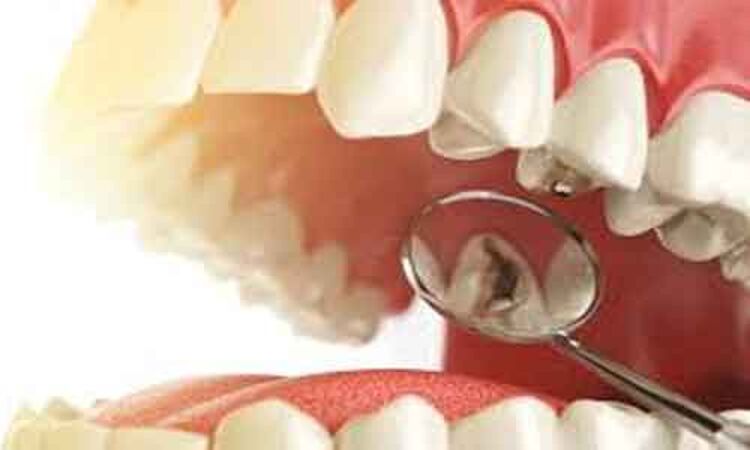- Home
- Medical news & Guidelines
- Anesthesiology
- Cardiology and CTVS
- Critical Care
- Dentistry
- Dermatology
- Diabetes and Endocrinology
- ENT
- Gastroenterology
- Medicine
- Nephrology
- Neurology
- Obstretics-Gynaecology
- Oncology
- Ophthalmology
- Orthopaedics
- Pediatrics-Neonatology
- Psychiatry
- Pulmonology
- Radiology
- Surgery
- Urology
- Laboratory Medicine
- Diet
- Nursing
- Paramedical
- Physiotherapy
- Health news
- Fact Check
- Bone Health Fact Check
- Brain Health Fact Check
- Cancer Related Fact Check
- Child Care Fact Check
- Dental and oral health fact check
- Diabetes and metabolic health fact check
- Diet and Nutrition Fact Check
- Eye and ENT Care Fact Check
- Fitness fact check
- Gut health fact check
- Heart health fact check
- Kidney health fact check
- Medical education fact check
- Men's health fact check
- Respiratory fact check
- Skin and hair care fact check
- Vaccine and Immunization fact check
- Women's health fact check
- AYUSH
- State News
- Andaman and Nicobar Islands
- Andhra Pradesh
- Arunachal Pradesh
- Assam
- Bihar
- Chandigarh
- Chattisgarh
- Dadra and Nagar Haveli
- Daman and Diu
- Delhi
- Goa
- Gujarat
- Haryana
- Himachal Pradesh
- Jammu & Kashmir
- Jharkhand
- Karnataka
- Kerala
- Ladakh
- Lakshadweep
- Madhya Pradesh
- Maharashtra
- Manipur
- Meghalaya
- Mizoram
- Nagaland
- Odisha
- Puducherry
- Punjab
- Rajasthan
- Sikkim
- Tamil Nadu
- Telangana
- Tripura
- Uttar Pradesh
- Uttrakhand
- West Bengal
- Medical Education
- Industry
Novel filling material prevents recurrence of caries in the margins of restoration

Vivadent has recently introduced a tooth-colored filling material, named Cention N, for the bulk application in retentive preparations with or without the application of an adhesive system.
Cention N's ability to prevent demineralization of enamel and dentin showed that this material prevents the recurrence of caries in the margins of restoration in a clinical setting.
Furthermore, previous investigations have declared superior microhardness and fracture resistance for Cention N when compared to amalgam restorations. Recently in a similar study conducted by Maryam Firouzmandi and colleagues, it was observed that Cention N showed promising results in terms of fracture strength and marginal adaptation, as published in the International Journal of Dentistry.
The researchers from the Oral and Dental Disease Research Center, Department of Operative Dentistry, School of Dentistry, Shiraz University of Medical Sciences, Shiraz, Iran carried out the study with the aim to compare the fracture strength and marginal adaptation of MOD cavities restored with Cention N, bonded Cention N, and resin composite, as well as to investigate the effect of cavity preparation volume on those properties.
In this experimental study, 120 human maxillary premolars were randomly divided into six groups according to the type of restoration and cavity volume (n = 20): (I) conservative MOD restored with Cention N, (II) conservative MOD restored with bonded Cention N, (III) conservative MOD restored with Z250 resin composite, (IV) extended MOD restored with Cention N, (V) extended MOD restored with bonded Cention N, and (VI) extended MOD restored with Z250 resin composite.
Fracture strength (MPa) was tested using a universal testing machine. To investigate marginal adaptation, polyvinyl-siloxane impressions were taken and poured with epoxy resin. Resin replicas were examined by SEM (×400) for marginal adaptation.
ANOVA tests, Tukey's test, and independent t-test were used to analyze data ( P≤ 0.05).
The study revealed that among conservative restorations, the fracture strength of bonded Cention N was significantly greater than that of Cention N (P = 0.001), while in the extended preparations, there was no significant difference between fracture strengths of different types of restorations ( P= 0.579).
Moreover, in terms of marginal adaptation, there was no significant difference between different types of conservative restorations ( P= 0.232). However, in extended preparations, composite showed significantly lower marginal adaptation than Cention N and bonded Cention N ( P= 0.004 and P= 0.045, respectively).
Conservative preparations showed significantly greater fracture strength and marginal adaptation compared to extended ones in groups restored with composite.
Hence, the authors concluded that "the volume of cavity preparation was shown to be effective in the materials fracture strength and marginal adaptation. Cention N showed promising results in terms of fracture strength and marginal adaptation."
Dr. Nandita Mohan is a practicing pediatric dentist with more than 5 years of clinical work experience. Along with this, she is equally interested in keeping herself up to date about the latest developments in the field of medicine and dentistry which is the driving force for her to be in association with Medical Dialogues. She also has her name attached with many publications; both national and international. She has pursued her BDS from Rajiv Gandhi University of Health Sciences, Bangalore and later went to enter her dream specialty (MDS) in the Department of Pedodontics and Preventive Dentistry from Pt. B.D. Sharma University of Health Sciences. Through all the years of experience, her core interest in learning something new has never stopped. She can be contacted at editorial@medicaldialogues.in. Contact no. 011-43720751
Dr Kamal Kant Kohli-MBBS, DTCD- a chest specialist with more than 30 years of practice and a flair for writing clinical articles, Dr Kamal Kant Kohli joined Medical Dialogues as a Chief Editor of Medical News. Besides writing articles, as an editor, he proofreads and verifies all the medical content published on Medical Dialogues including those coming from journals, studies,medical conferences,guidelines etc. Email: drkohli@medicaldialogues.in. Contact no. 011-43720751


